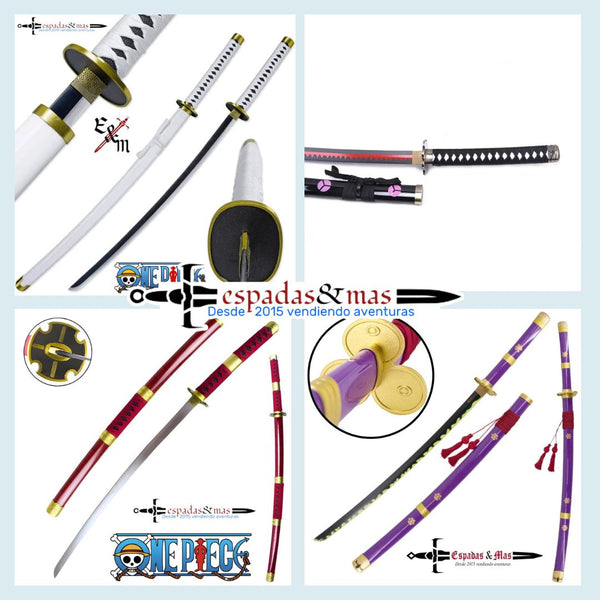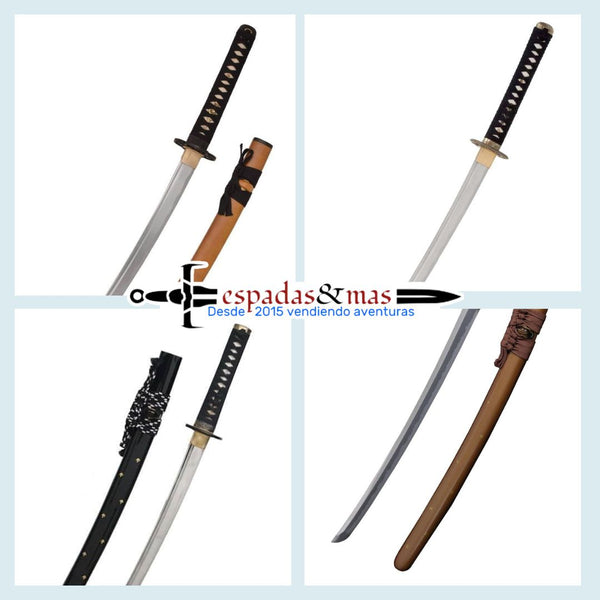Welcome to a new article from Espadas Y Más. Today, we want to talk to you about the postures of Japanese Budo with katana, used in Kenjutsu, iaido and related arts in which the katana is used such as ninpo.
Remember that you can buy your favorite katanas in our store
Basic Positions (Kamae) with Katana
Welcome to a new article from Espadas Y Más. Today, we want to talk to you about the postures of Japanese Budo with katana, used in Kenjutsu, iaido and related arts in which the katana is used such as ninpo.
The kamae we are talking about today are:
- Chudan no kamae: The sword is held in front of the body, approximately at chest or stomach level. The blade is generally pointed towards the opponent or slightly downwards.
The grip of the sword is firm but not tense, allowing for fluid movement and quick response to the opponent's actions.
The body is balanced, with the feet shoulder-width apart. The knees are slightly bent and the back is straight. This posture allows mobility and stability during combat.
In this stance, the swordsman is prepared to both attack and defend. The position of the sword and body allows for quick transitions between strikes, parries, and other techniques.
Check out this katana, One Piece Fan ;)

-Jodan no kamae: The sword is held above the head or slightly in front of the forehead. The blade is usually angled downwards towards the opponent, ready to deliver powerful overhead blows.
The hilt of the sword is strong yet flexible, allowing for quick and precise movements. The position of the hands facilitates offensive and defensive actions from the high stance.
The body is upright with the feet shoulder-width apart. The knees are bent to maintain balance and stability, and the back remains straight. This posture allows for agility and quick movements during combat.
In "Jodan no kamae", the swordsman is prepared to deliver overhead slashes, while also being prepared to defend against high-level attacks. The elevated position of the sword allows for strong downward slashes and thrusts.
A perfect katana for Iaido practice

-Gedan no kamae: The sword is held low, often at or below waist level. The blade is positioned to defend against low attacks and can be quickly raised to counterattack.
The sword's grip is firm and adaptable, allowing for quick changes of direction and fast defensive maneuvers. The hand position facilitates offensive and defensive actions from the low stance.
The body is in a low position, with the knees bent and the back slightly leaning forward. The feet are placed shoulder-width apart to maintain stability and allow for agile movement.
In "Gedan no kamae", the swordsman is prepared to defend against low blows and to launch counterattacks from the low stance. The low stance provides a solid base for strong thrusts and sweeps aimed at the opponent's lower body.
Check out this Functional Katana from Kill Bill!

-Kasumi no kamae: The sword can be held in a less conventional or more fluid manner, making it difficult for opponents to predict the direction of attacks or defenses.
The practitioner may use subtle body movements, weight shifts, or changes in stance to create confusion and mislead the opponent.
"Kasumi no kamae" may emphasize the development of heightened awareness, intuition, and the ability to read and respond to the opponent's movements on a deeper, more intuitive level.
The stance encourages adaptability and improvisation, allowing the practitioner to adjust their techniques and strategies based on the specific situation and the opponent's actions.

-Kasumi no kamae: The sword is held close to the body, often hidden behind the back or to the side, making it difficult for the opponent to anticipate the direction or timing of attacks.
The sword grip is relaxed but prepared, allowing for quick and unexpected movements. The body is turned slightly to one side, with the sword hidden behind the back or near the hip. The knees are bent and the back is straight to maintain balance and stability.
In "Waki no kamae", the swordsman is prepared to defend against attacks while also being ready to launch surprise counterattacks from the hidden position. The deceptive nature of this stance can be used to create openings and exploit the opponent's vulnerabilities.
We hope you enjoyed this introduction to kenjutsu kamae.
Don't miss new posts for more guides and tutorials!

